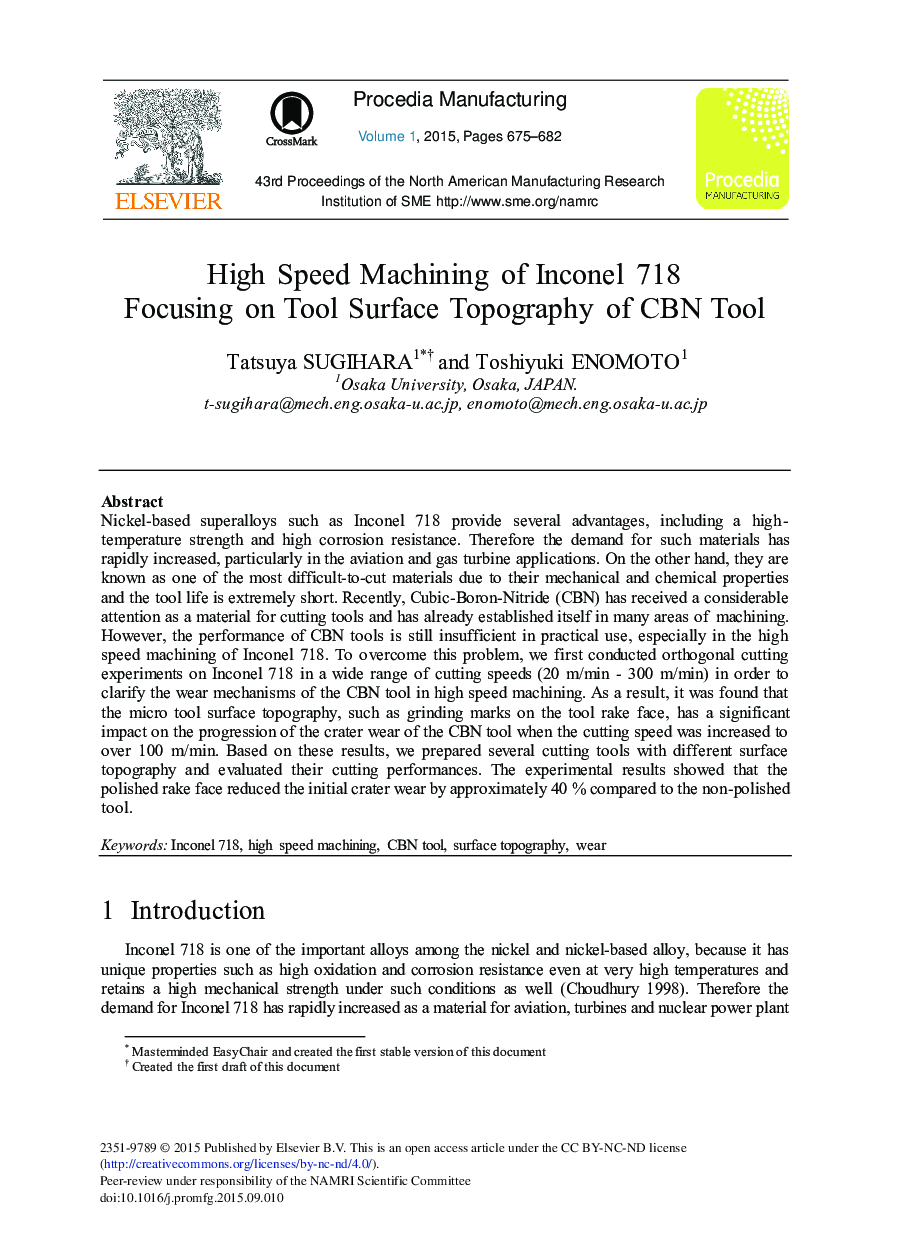| Article ID | Journal | Published Year | Pages | File Type |
|---|---|---|---|---|
| 1143735 | Procedia Manufacturing | 2015 | 8 Pages |
Nickel-based superalloys such as Inconel 718 provide several advantages, including a high-temperature strength and high corrosion resistance. Therefore the demand for such materials has rapidly increased, particularly in the aviation and gas turbine applications. On the other hand, they are known as one of the most difficult-to-cut materials due to their mechanical and chemical properties and the tool life is extremely short. Recently, Cubic-Boron-Nitride (CBN) has received a considerable attention as a material for cutting tools and has already established itself in many areas of machining. However, the performance of CBN tools is still insufficient in practical use, especially in the high speed machining of Inconel 718. To overcome this problem, we first conducted orthogonal cutting experiments on Inconel 718 in a wide range of cutting speeds (20 m/min - 300 m/min) in order to clarify the wear mechanisms of the CBN tool in high speed machining. As a result, it was found that the micro tool surface topography, such as grinding marks on the tool rake face, has a significant impact on the progression of the crater wear of the CBN tool when the cutting speed was increased to over 100 m/min. Based on these results, we prepared several cutting tools with different surface topography and evaluated their cutting performances. The experimental results showed that the polished rake face reduced the initial crater wear by approximately 40% compared to the non-polished tool.
